Ever want to get into sourdough bread making but feel overwhelmed by all the information out there? You’re not alone. Many people are drawn to sourdough bread making for its incredible flavor and gut microbiome benefits, but when you start looking online, there are too many different methods, complex terms, and confusing advice.
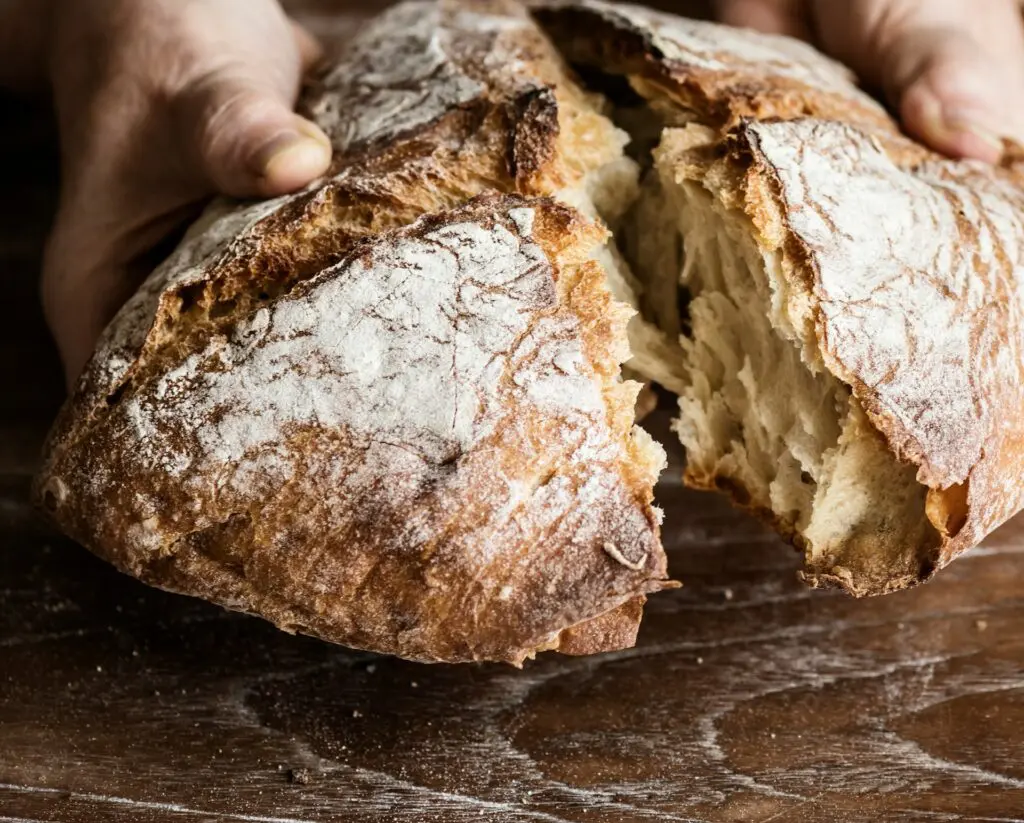
This guide will show you a clear path to learn sourdough baking step by step. Think of this as your first day of sourdough school – you’ll learn what to expect, how to get ready, and how to avoid the mistakes that stop most beginners.
Basic Bread Making | Why Beginners Struggle | Sourdough in a Bread Machine? | Complete Guide for Beginners | Is Homemade Sourdough Safe? | FAQs | Takeaways
Understanding Basic Bread Making
Before diving into sourdough, which is unyeasted, it’s helpful to understand the basic yeasted bread making process. All yeasted breads, whether made by hand or machine, follow these fundamental steps:
- Mixing – Combining flour, water, yeast, and salt
- Kneading – Working the dough to develop gluten (some recipes like no-knead bread skip this)
- First Rise – Letting the dough expand as the yeast multiplies (1-4 hours)
- Shaping – Forming the dough into its final form
- Second Rise – Allowing the shaped dough to rise again (30-60 minutes)
- Baking – Transforming the dough into bread at high temperatures
Why Many Beginners Struggle with Sourdough Bread
In contrast with yeasted bread, new bakers often find sourdough challenging because it requires:
- Maintaining a living sourdough starter culture
- Understanding complex fermentation timing
- Handling wet, sticky dough
- Reading dough development signs rather than following strict timelines
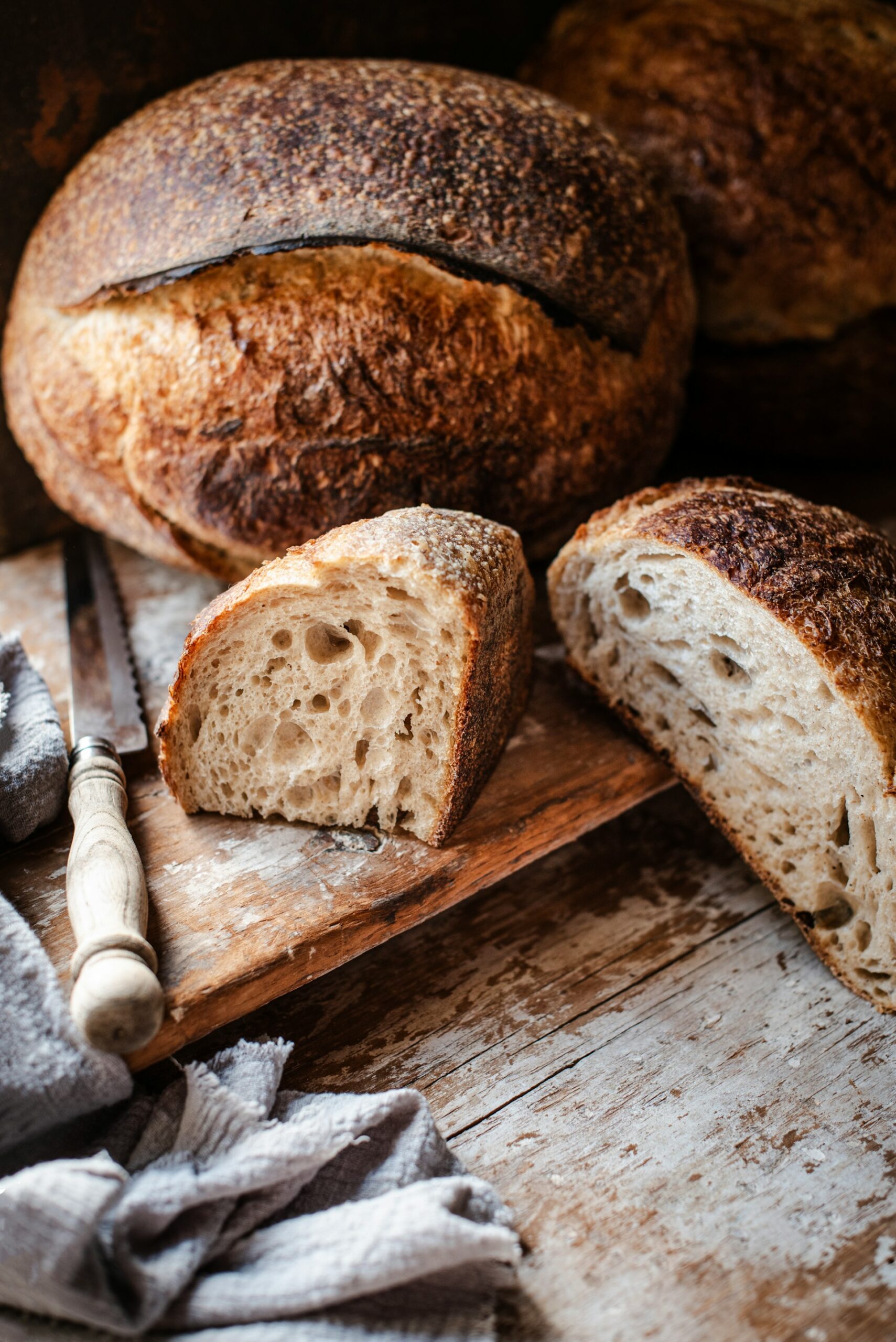
Can You Make Sourdough in a Bread Machine?
While it’s technically possible to make sourdough in a bread machine, it’s not ideal for beginners learning the craft. Here’s why:
- Sourdough needs longer fermentation times than most bread machines allow
- The timing of sourdough fermentation varies based on temperature and starter strength – bread machines can’t adjust for this
- You miss learning important visual and tactile cues about dough development
- Troubleshooting becomes more difficult because you can’t observe the process closely
- Even premium bread machines with “sourdough” settings often require adding yeast to their recipes – this isn’t true sourdough, which relies solely on natural fermentation
A bread machine excels at what it’s designed for: making basic yeasted breads. However, the fixed cycles and limited control make it less suitable for the variable nature of sourdough fermentation.
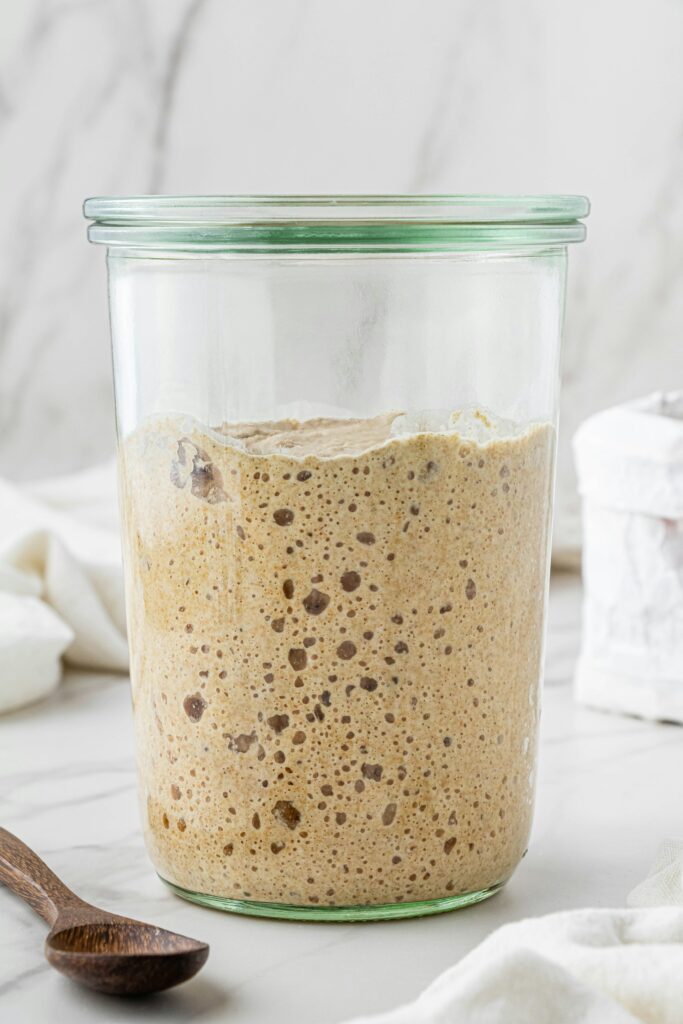
A Complete Roadmap for Beginner Sourdough Bakers
Here’s a sourdough making bread progression that will set beginners up for success. You learn basic bread-making skills that will serve as a foundation for more advanced sourdough baking. The timeline typically takes 4-6 weeks.
Essential Equipment for Beginning Sourdough Bread Making
As a beginner, you don’t need fancy equipment to start making sourdough bread. Here’s what you’ll need:
- (Optional but highly recommended) Dutch oven: Most home bakers use a Dutch oven for baking sourdough. We bought the Amazon Basics model years ago, and it is still in great shape.
- Large mixing bowl
- Measuring cups and spoons
- Heavy wooden spoon or spatula
- Plastic wrap
- Clean kitchen towels
- (If not using a Dutch oven,) bread baking pan
- Parchment paper
Step 1: No-Knead Bread (Week 1)
Your first step is mastering a basic no-knead bread. Plan to make a few loaves over a weekend.
Time commitment: 24 hours total, but only 30 minutes of active work per loaf
What you’ll learn:
- How dough expands and rises
- Basic bread dough handling
- How to use your oven for bread baking
- What properly baked bread looks and sounds like
Success indicators: Your bread has a crispy crust and sounds hollow when tapped
Step 2: Basic Hand-Kneaded Bread (Week 2)
Once comfortable with no-knead bread, move to hand-kneaded bread. Make 2-3 loaves over 1-2 weekends.
Time commitment: 4-5 hours per loaf, with 30 minutes of active work
What you’ll learn:
- Proper kneading techniques
- How dough texture changes as gluten develops
- Basic shaping skills
- Reading dough readiness
Success indicators: Your dough passes the windowpane test and holds its shape
Step 3: Begin Your Sourdough Starter (Week 3)
While practicing regular bread, begin your starter for your sourdough bread. Your starter is more than just an ingredient – it’s a living culture that can last for generations with proper care.
Fun Fact: Some families have maintained their sourdough starters for over a century, passing them down as cherished heirlooms that carry both flavor and family history. In Alaska, there are starters that trace back to the Klondike Gold Rush of the 1890s, still bubbling away in modern kitchens.
Time commitment: 5-7 days, with 5 minutes twice daily for feeding
What you’ll learn:
- Starter maintenance routine
- Feeding
- Signs of healthy fermentation
- How temperature affects activity
- Proper starter consistency
Success indicators: Your starter doubles reliably within 4-8 hours of feeding
Step 4: Your First Sourdough Loaf (Weeks 4-6)
With a mature starter and solid bread-making skills, you’re ready to make your first loaf.
Time commitment: 24-36 hours per loaf, with 30-45 minutes of active work
What you’ll learn:
Success indicators: A well-risen loaf with good flavor and crispy crust
More Resources
No guide to sourdough baking would be complete without a nod to the iconic King Arthur Baking Company. Check out their on-demand classes to build your skills.
Pro Tips:
- Document each bake with notes and photos
- Keep your workspace organized and clean
- Master each step before moving forward
- Join online communities for support and troubleshooting
- Remember that every “failed” loaf teaches valuable lessons
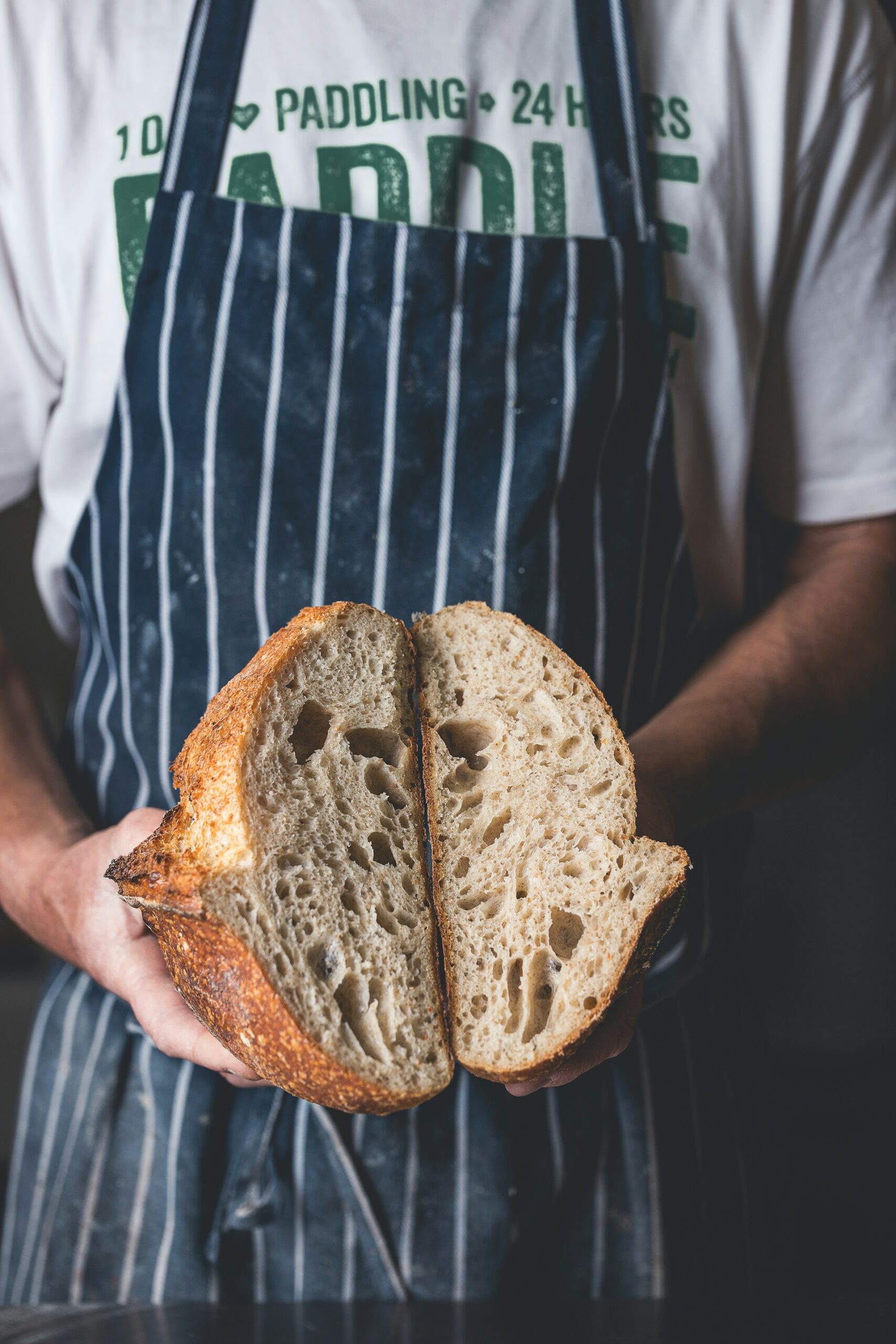
Is Homemade Sourdough Safe?
Many beginners worry about safety when making fermented foods at home. The good news is that sourdough is one of the safest fermented foods you can make, much safer than home brewing beer where there are more opportunities for things to go wrong.
Here’s why sourdough is naturally safe:
- The fermentation process creates a highly acidic environment (pH 3.5-4.5) where harmful bacteria can’t survive
- Beneficial bacteria (lactobacilli) and wild yeast naturally outcompete harmful organisms
- The high baking temperatures (usually 450°F+) kill harmful organisms
How to know your sourdough is healthy:
- It should smell sour but pleasant (like yogurt or beer)
- The color should be white to light beige
- You’ll see bubbles forming as it ferments
Ways your sourdough could become unsafe:
- If visible mold grows on your starter (it will be obviously pink, orange, or black – you can’t miss it)
- If you use dirty utensils or containers that contaminate your dough
- If you don’t bake the bread thoroughly
Unlike beer brewing, where contamination can be harder to spot and potentially dangerous, sourdough problems are more obvious to see and smell.
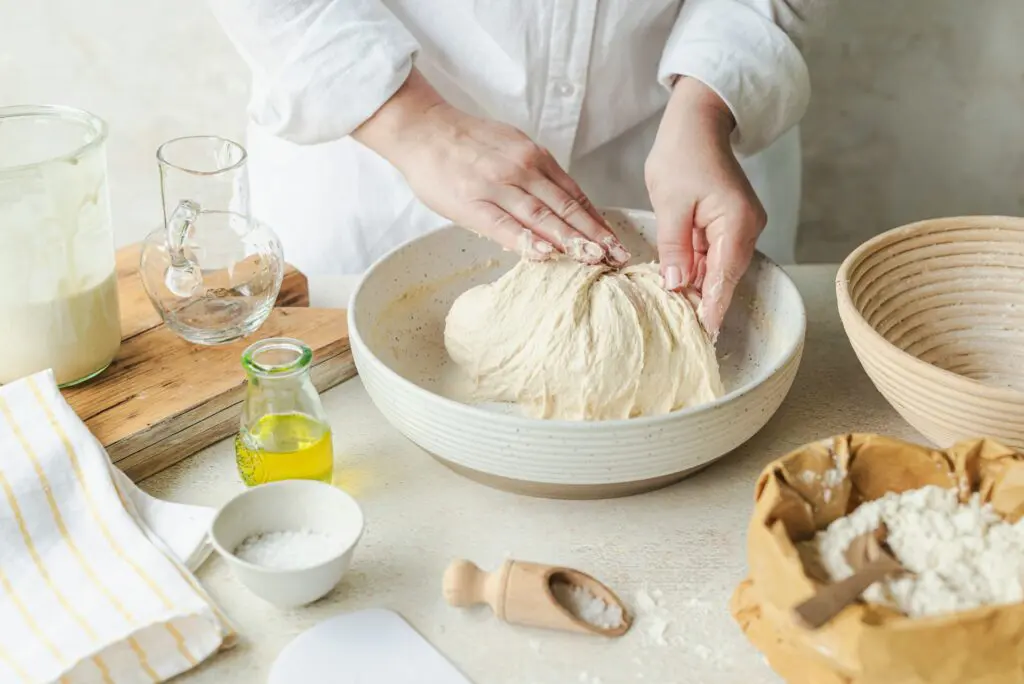
Common Questions About Making Sourdough Bread for Beginners
How long does it take to make my first sourdough loaf?
From starting your culture to baking your first loaf, expect about 7-10 days to develop a strong starter, plus 24-36 hours for making the actual bread.
What’s the most common mistake beginners make?
Not giving the starter enough time to mature before using it. A mature starter should consistently double in size within 4-8 hours after feeding.
Can I use regular flour to make a sourdough starter?
Yes, you can start with regular all-purpose flour, though many bakers prefer unbleached bread flour. You can switch to whole wheat or rye flour later to enhance fermentation.
How do I know if my starter has gone bad?
A healthy starter smells sour but pleasant. If you see pink, orange, or black mold, or if it smells rotten (rather than sour), it’s time to start over.
What temperature should my kitchen be for making sourdough?
Ideal room temperature is between 68-75°F (20-24°C). Warmer temperatures speed up fermentation, while cooler temperatures slow it down.
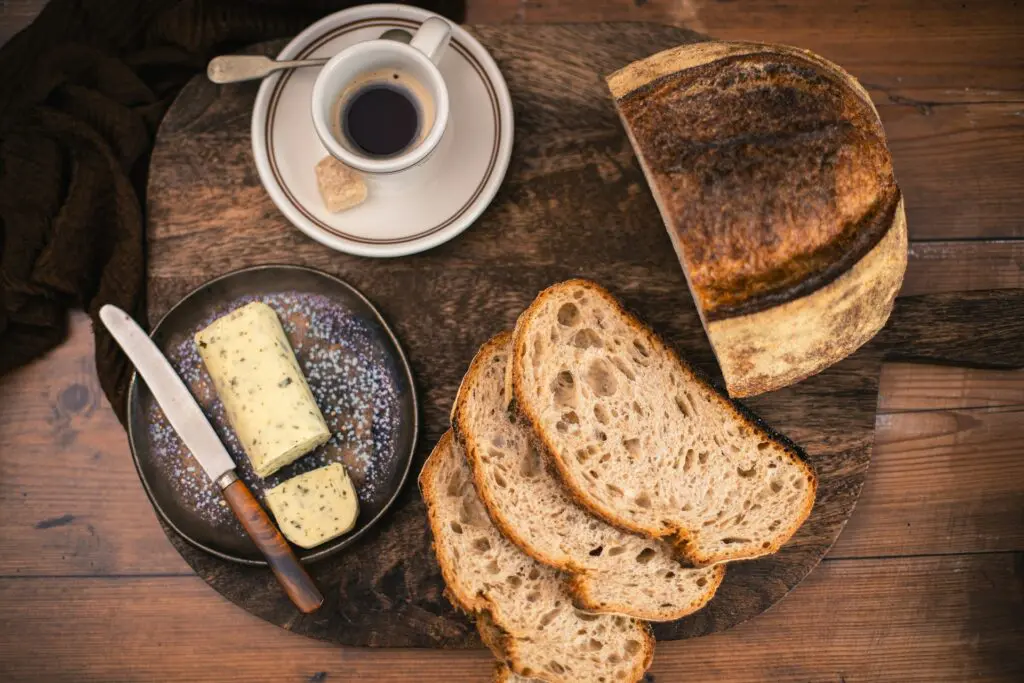
Start Your Sourdough Journey: Next Steps for Beginners
You can master sourdough baking without feeling overwhelmed. Our learning path takes you from a basic no-knead bread to your first sourdough loaf, and you’ll build your skills with each step. Every great baker started as a beginner, just like you. Take your time to practice each stage and move forward only when you feel ready.
Ready to start your journey? Make your first no-knead bread and use this guide as your map for each next step. You’ll bake that perfect sourdough loaf sooner than you think.


Leave a Reply